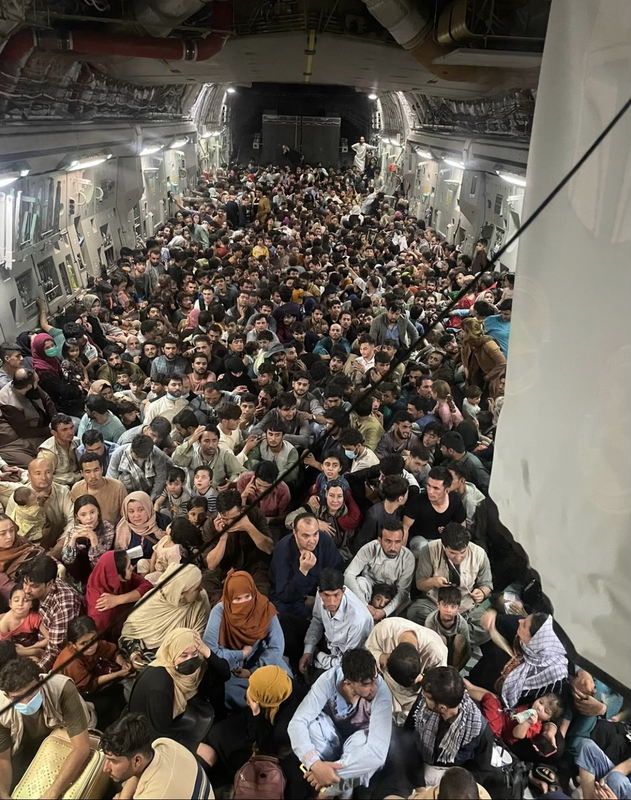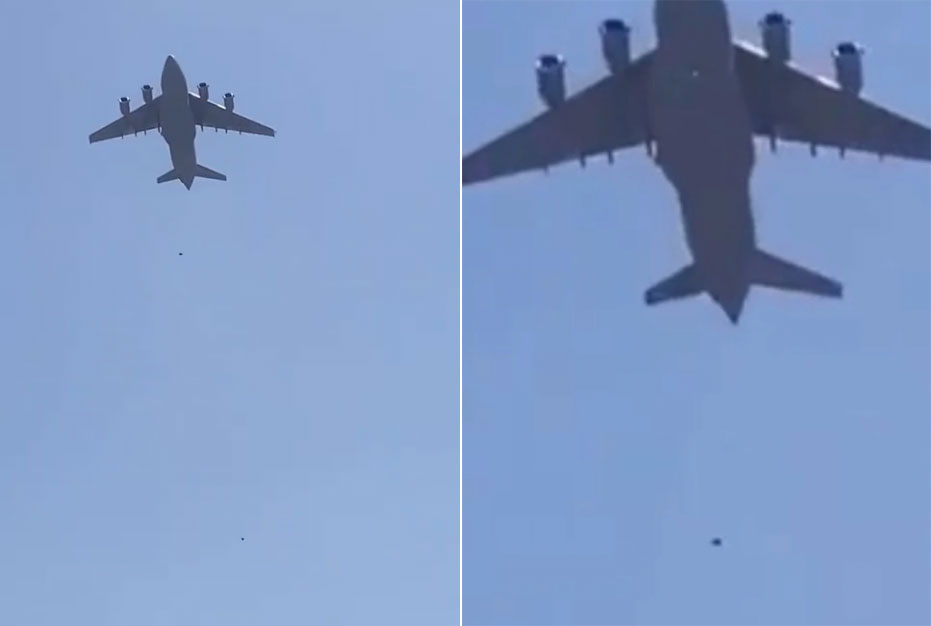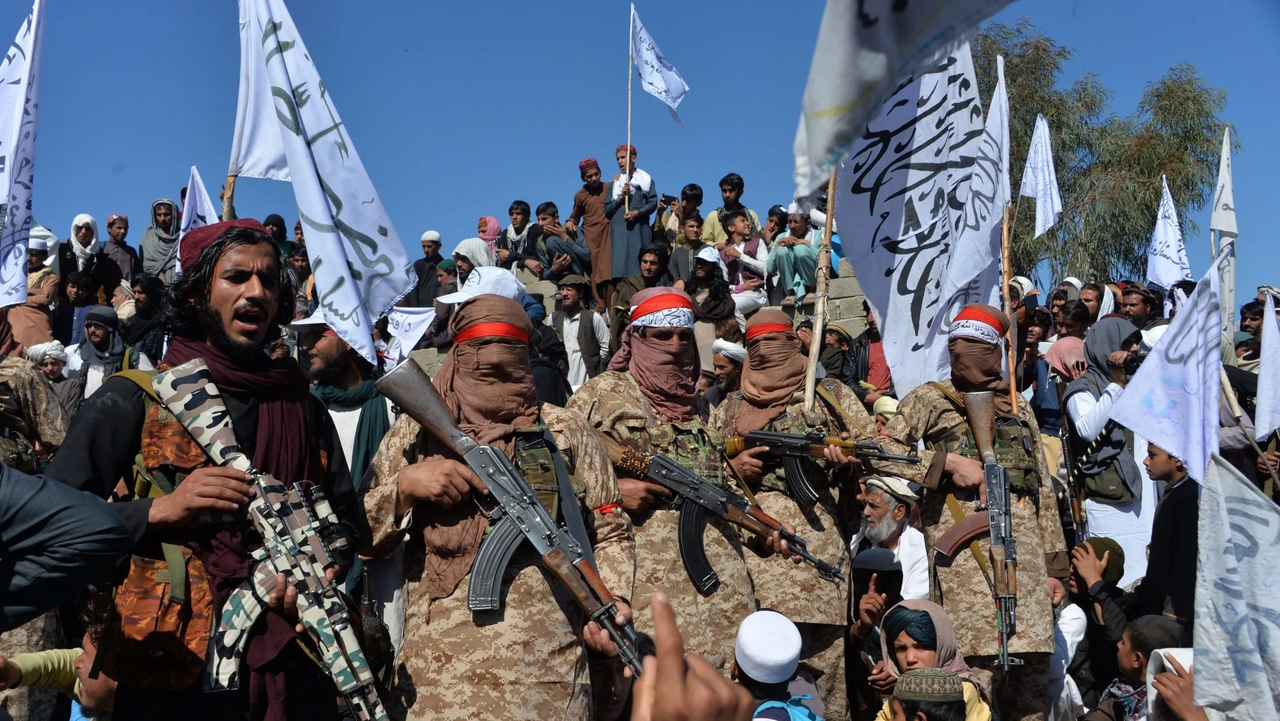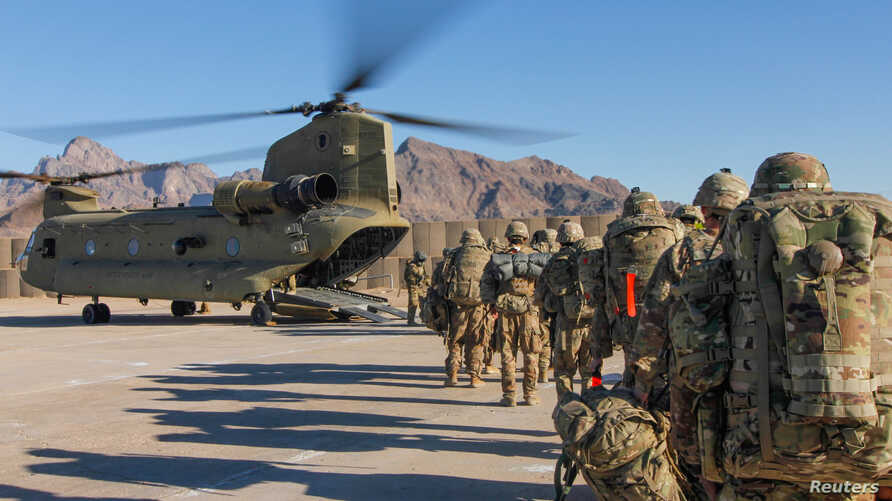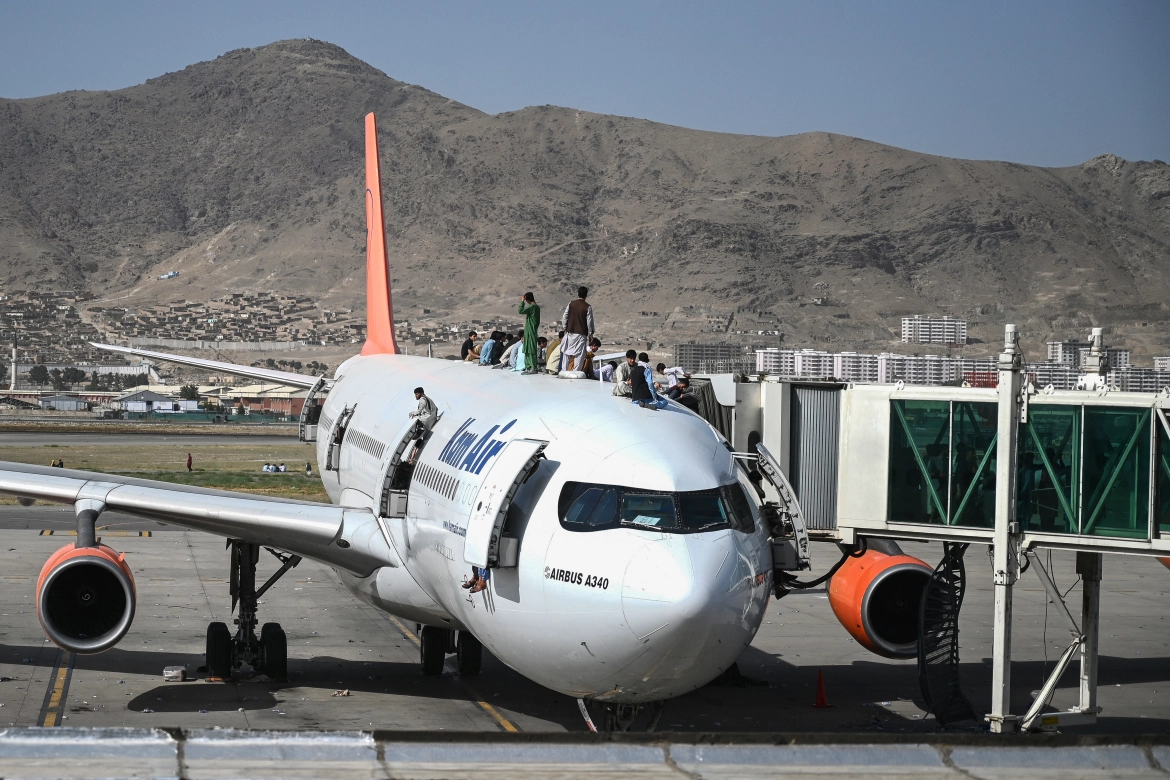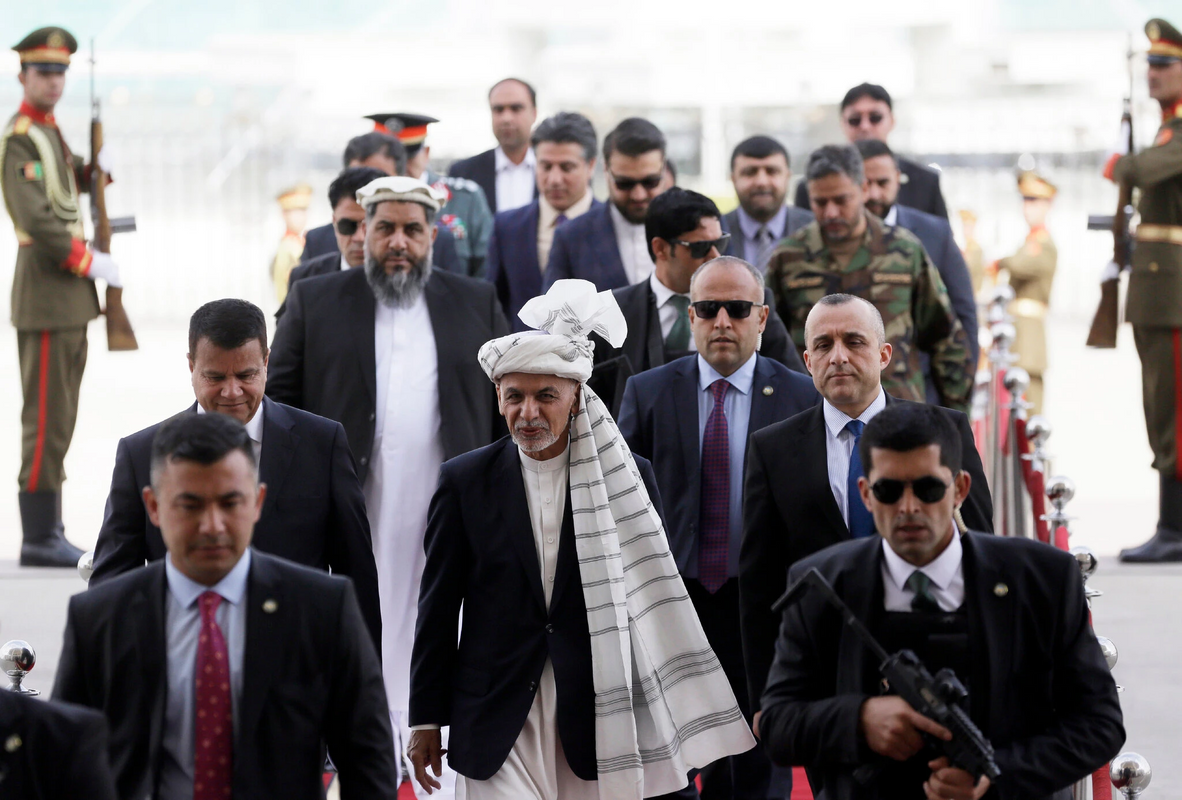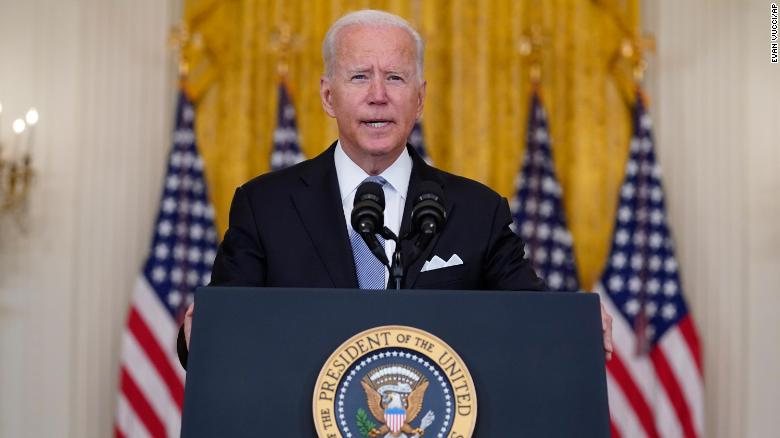Explained: Why Afghans Are Desperately Trying To Escape After The Taliban's Takeover
A brief summary of the situation in Afghanistan after its president fled the country and created a power vacuum for Taliban militants to attack.
Subscribe to our Telegram channel for our latest stories and breaking news.
Warning: The story contains footage that may be disturbing to some readers.
1. What is happening at the airport in Kabul, Afghanistan?
Tens of thousands of Afghans are trying to flee their country after Taliban militants took over their capital city last week.
The airport is said to be the locals' last escape route as the militants are racing to block all exits in the capital.
Viral videos and photos on social media see a huge crowd of Afghans trying to climb over fences to get into the airport in Kabul.
A photo shared by US defence and security news site Defense One shows over 640 people standing shoulder to shoulder in a cargo plane.
According to Forbes, the aircraft was designed only to accommodate 134 soldiers and 77,564kg of cargo.
The aircraft, one of many that managed to take off, safely landed in Qatar on Sunday, 15 August.
Meanwhile, a video showing another US aircraft taxiing at the airport is also being widely circulated on the Internet.
In the video, Afghans can be seen trying to cling onto the plane while hundreds of others run along with the taxiing aircraft.
The Guardian reported, based on footage, that bodies of two men and a woman were seen lying on the ground of the airport. It is unsure whether they fell from the aircraft or they were victims of a stampede.
The UK news portal also reported that at least two individuals were seen falling to their deaths from the undercarriage immediately after takeoff.
Taliban militants reportedly fired warning shots to control the crowd near the airport, while the Pentagon said US troops shot down two unidentified gunmen who fired live rounds at the crowd.
2. Who is the Taliban?
The Taliban is a military organisation in Afghanistan officially formed in 1994, reported CNN. Prior to that, they were responsible for fighting against invading Soviet forces in the 1980s.
During their rule of Afghanistan in the mid-90s, they aimed to remove any foreign influence and impose their interpretation of Islamic law on the country — which included limiting women's movement to their home, banning women from education and work, and forcing women to wear all-covering burqas.
In 2001, the Taliban was said to be providing sanctuary to Osama bin Laden's Al-Qaeda movement, reported BBC.
The Al-Qaeda group was responsible for the 9/11 attack in the US. 19 men hijacked four commercial planes in the US before crashing two into the World Trade Center towers and one into the Pentagon.
More than 2,700 were killed in the deadliest terrorist attack in US history.
On 7 October 2001, the US launched attacks in Afghanistan. By December of the year, the Taliban regime collapsed.
The presence of US troops in Afghanistan is said to be the "longest war" in US history.
Image via Baz Ratner/Reuters via Al JazeeraSince then, for over two decades, the US spent hundreds of billions of dollars to build up the Afghan government and its defence forces, reported The New York Times.
In February last year, then US president Donald Trump's administration signed a peace deal with the Taliban in Doha, Qatar.
The US agreed to withdraw troops and release some 5,000 Taliban prisoners. In exchange, the Taliban agreed to take steps to prevent any group or individual — including Al-Qaeda — from using Afghanistan to threaten the security of the US or its allies.
The US set 31 August as the deadline to fully withdraw its troops from Afghanistan.
3. Why did the US want to pull its troops out of Afghanistan?
The reason behind withdrawing its troops from Afghanistan is to end the 20-year military mission and stop sacrificing "thousands of America's daughters and sons" in the war.
"We did not go to Afghanistan to nation-build," CNBC quoted US President Joe Biden as saying on 8 July.
He said throughout the 20 years, the ideal conditions where the US troops could be pulled out from the country never materialised.
With that said, Biden added it will be up to the Afghan government to decide the future of its country.
4. Why are Afghans fleeing the country?
Afghans climbed to the top of an airplane as they waited at the Kabul airport.
Image via Wakil Kohsar/AFP via Al JazeeraThe Taliban was an oppressive regime when it ruled the country between 1996 and 2001, the AP reported. Music was banned, the hands of thieves were cut off as punishment, and adulterers were stoned.
The American non-profit news agency reported that many Afghans fear that the Taliban will reimpose the harsh interpretation of Islamic law.
The Taliban stated its intention to build an "inclusive, Islamic government" and provide a secure environment for the return of normal life after decades of war. In recent years, they have also been said to present themselves in a more moderate front, pledging that they will not exact revenge. However, many Afghans do not believe in its promises.
5. Why did the Afghan government and security forces collapse without putting up a fight?
Afghan President Ashraf Ghani (centre) arriving at the Parliament in March 2021.
Image via Mariam Zuhaib/AP via The New York TimesJust weeks ahead of the deadline of the US troops' withdrawal, the Taliban launched an aggressive attack on cities in Afghanistan.
According to Al Jazeera, the Taliban captured 26 out of the country's 34 provincial capitals in 10 days.
Over the weekend, photos and videos of Taliban fighters taking control over the Afghan presidential palace emerged online.
This comes after Afghan President Ashraf Ghani fled his country. He explained that his escape was to avoid further bloodshed.
As to the question of why the Afghan government and security forces did not put up a fight against the militants, AP said the short answer is "corruption".
The news agency reported that the Western-backed government was rife with corruption, with local commanders often exaggerating the number of soldiers to siphon off the given resources.
The US, along with the North Atlantic Treaty Organization (NATO), had injected billions of dollars into the country to equip Afghan security forces with weapons. France24 reported that the US had spent USD83 billion (about RM352 billion) on the cause.
While their 300,000 troops were formidable on paper, the entire army was plagued by years of corruption, pay-offs, poor leadership, lack of training, and plummeting morale.
Their morale further dwindled when it became clear that US troops will be pulled out for good.
6. What is US president Joe Biden doing?
As of now, Biden said US troops will be staying longer in the war zone to evacuate American citizens and eligible Afghan allies, reported The Guardian.
He gave a stern warning to the Taliban that a "devastating" consequence will unfold if it attempted to attack or disrupt the evacuation mission.
Speaking during a press conference yesterday, 16 August, he admitted his administration was caught by surprise by the speed of the Taliban's takeover, which he blamed on the Afghan government's lack of will to fight.
"After 20 years, I've learned the hard way that there was never a good time to withdraw US forces," he said.
"Any more years in Afghanistan would not have made any difference. US troops were bearing the brunt for them (Afghans)."
"We gave them every chance to determine their own future. What we couldn't provide them was the will to fight for that future," Biden added, a sentiment that is similar to what he had said in July.
There are currently 2,500 US troops at the Kabul airport. Another 3,500 will be deployed when the runways are open.
It is learnt that the West has to evacuate tens of thousands of Afghans. They are people who have been promised resettlement because of their work with and for the US and Britain.
A chancellor in Germany said they have to evacuate 10,000 people from Afghanistan whom they are responsible for. The evacuees include 2,500 Afghan support staff, human rights activists, lawyers, and others whom the government sees as being at risk, according to The Guardian.
7. Who are left in Afghanistan to defend their country?
Without a president, former Afghan president Hamid Karzai and current Vice President Amrullah Saleh have stepped in to fill the power vacuum.
In a tweet, Hamid said that he will coordinate a council to manage a peaceful transfer of power, reported New York Times.
He advised the remaining Afghan government and the Taliban to act in restraint.
Meanwhile, Amrullah — a former head of intelligence who has been fighting against the Taliban since the 1990s — said that he will never surrender.
